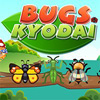Rethinking Lifestyle
Malathion – is it worth the risk?
By now we have all heard that The International Agency for Research in Cancer (IARC), an agency of the World Health Organization has classified malathion (and glyphosate ie. Roundup) as “probably carcinogenic to humans.” So what does this mean.
First of all, a refresher on certainty in science. Science is both precise and not so precise. Science will tell us that the pH of a solution is exactly 4.5, which means that the pH of that solution is not 4.6 or 4.4. It is precisely 4.5. However, if I start smoking at 15, science cannot tell me that I will die from cancer at 45. Science can’t even tell me if I will live longer if I don’t smoke. All science can say is that I will probably live longer if I don’t smoke.
Furthermore the IARC does not do research itself. It appoints a group of international experts to review the research that has been done it then expresses its opinion based on that review. To make the results of its review more understandable to the likes of you and me, the IARC says of an agent (like malathion and glyphosate) that it is carcinogenic, or that it is probably carcinogenic, it is possibly carcinogenic or it may say the agent is probably not carcinogenic.
In essence, what the recent IARC bulletin says, is that because of new research, the IARC has moved malathion and glyphosate from the group of agents it considers possibly carcinogenic to the group of agents it considers probably carcinogenic.
So what does this new information mean for us here in Steinbach? It means that we now know that there is a greater risk to our health and our children’s health when we are exposed to malathion than we had thought before? Any mindful person [all of us have times when we are not mindful] has always known there is a risk in using malathion. After all, the chemical kills mosquitoes, a living organism. Is it reasonable to assume that such a chemical will have no effect on humans? Obviously not, but we implicitly believe that Health Canada has checked this out on our behalf, and has deemed that malathion kills, but only kills selectively. Can we be certain of this? No we can not, because science cannot answer that question with certainty.
So it’s a matter of assessing the risk. On the one hand mosquitoes are a nuisance – no disagreement there, and if spraying malathion eliminates them, we can all applaud. But at what risk? In addition to the risk to our health and the health of our children, there is also the possible effect on bees and butterflies.
It is my hope that as we deal with nuisance insects this summer, that we will be more cautious as a result of the new bulletin from the IARC. As we reach for that can of insecticide, as the city decides whether it should spray at night, we should all consider – is it worth the risk?




